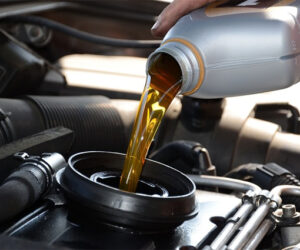Europeans who live in climate-sensitive areas are always accustomed to changing their summer Tyres for winter ones. Although studies repeatedly show you don’t need to live halfway up a snowy Alp to enjoy safer driving on a pair of winter tyres Reading, UK drivers may be a little more dubious about the advantages due to our mild winters.
Then, should you think about getting a pair of winter tyres for your car? We would definitely advise it if your budget permits, despite the additional cost and inconveniences of switching between various sets of summer and winter tyres.
The details are clear. Your summer or standard-fit tyres are usually made of rubber compounds that work best in moderate temperatures, and their tread designs aren’t meant to handle snow or ice. Different rubber compositions are mainly used to make winter tyres because to improve traction in wet or dry conditions at temperatures below 7 degrees Celsius. Even in the UK, wintertime temperatures seldom get over 4 degrees Celsius, so this is obviously important.
Winter tyres also contain tread that is actually intended to aid when circumstances are really bad prevent ice or compacted snow from accumulating around the tyre.
The tread channels on the tyres’ narrow grooves assist keep snow from accumulating and blocking them. The fundamental reason why conventional tyres perform less well in snowy circumstances is that snow compacts quickly, as anybody who has ever had the pleasure of building a snowman will attest to. In fact, it’s fair to argue that when the asphalt get covered in snow, winter tyres frequently outperform four-wheel drive.
Even though winter tyres are a very helpful addition to your automobile, it is important to let your insurance company know when you install them. The problem is because, somewhat absurdly, some insurance providers classify winter tyres as an aftermarket addition even though they provide safety benefits throughout the chilly, dark winter months.
Are winter tyres worth the investment?
If you’re purchasing a new vehicle, you might want to compare the advantages of winter tyres and four-wheel drive. On models where it is an option, the latter will cost an extra premium of about £1,500, but you can acquire a set of good winter tyres for only a third of that.
A four-wheel-drive vehicle won’t travel much farther than a two-wheel-drive vehicle on the same tyres if there is no grip. Furthermore, the advantages of 4WD are essentially nonexistent when braking.
• Tips for winter driving
Leading tyre manufacturer claims that a car with winter tyres can stop from 31 mph in 35 metres, which is eight metres, or almost two car lengths, less time than if it had summer tyres.
On ice, the contrast is much more noticeable. A car with standard tyres needs an additional 11 meters—the length of a double-decker bus—to stop while travelling at a leisurely 18 mph.
Winter tyres are something to think about if you reside farther north where temperatures are frequently in the single digits or if you anticipate travelling long distances during the winter. However, they are not inexpensive.
Despite all of these challenges, we firmly believe that purchasing a pair of winter tyres if you can afford them can increase your level of safety when driving in the cold.
If your vehicle has a full-size spare wheel, it would be a good idea to put a winter tyre on it automatically. Due to potholes, winter tyres are more prone to puncture, while summer tyres can be briefly driven in warm weather as long as the damaged tyre get replaced as soon as is practical.
Winter Wheels & Tyres
The simplest thing to do if you’ve purchased a pair of winter tyres is to swap out your car’s standard tyres for them. To ensure that your tyres are correctly fitted and balanced, it’s recommended to do this at a tyre fitter. To put your standard tyres back on, you will need to return to your tyre fitter in the spring, though.
Purchasing new wheels to go with your new winter tyres is another option. If they are available, plain steel wheels or a smaller wheel design would be less expensive than a matching set of alloy wheels. A set of steels won’t significantly detract from the appearance of your automobile because cars get very dirty throughout the winter.
There isn’t currently a winter-specific space-saver spare wheel available, but conventional space-savers have treads that function in a variety of situations, often at speeds up to 50 mph. You may get winter run-flat tyres that are still functional after a puncture if your automobile has run-flat tyres.
